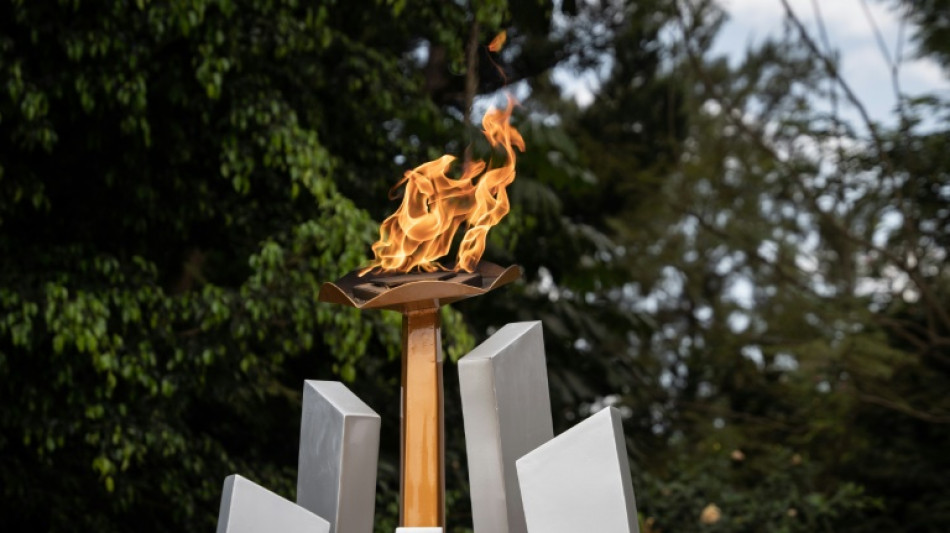
CMSC
0.0700


Vanessa Uwase had little chance of survival when her mother was murdered during the 1994 genocide in Rwanda. Today, she works at the country's largest memorial to the slaughter -- one of four sites added to UNESCO's heritage list on Wednesday.
The Gisozi genocide memorial is "a resting place for many of my loved ones, and working here helps me to reconnect with them somehow and to heal", she said, recounting her extraordinary life story.
Barely a few weeks old, Uwase was alone and clinging to her mother's breast when a Hutu schoolgirl spotted her by the roadside and insisted on rescuing the Tutsi infant.
"As I reached out to embrace the baby, her dying mother whispered to me, urging me to save her and take the baby to safety," Grace Uwamahoro told AFP.
Uwamahoro's frightened family attempted to dissuade her but the 10-year-old refused to let the baby go even as they fled across the border to a refugee camp in the Democratic Republic of Congo.
"It was really difficult because we did not have enough resources and there was a lot of pressure inside the camp to abandon the baby but my heart loved her. She had no name so I called her Vanessa," Uwamahoro said.
- 'Never forget' -
They would not return to Rwanda until 2004, a decade after the genocide by Hutu extremists that claimed 800,000 lives, mainly Tutsi.
As the family made a fresh start in Rwanda, Uwase slowly began to piece her history together, reconnecting with relatives who found her after seeing her story featured in a TV programme.
After university, she began working at the genocide memorial in Rwanda's capital -- helping her heal and come to terms with her identity as the adoptive Tutsi daughter of a Hutu woman.
"This memorial is very significant to me because it has been part of my healing journey. I have friends here, some of whom experienced terrible things as well," Uwase, now 29, told AFP.
"The memorial is a representation of our history and it is a final resting place for many souls that were lost. Mothers, fathers, children, friends, brothers, sisters, grandmothers, grandfathers, friends... this is where they rest."
Skulls, bone fragments, torn clothing and images of piled up corpses confront visitors to the memorial, which houses the remains of around 250,000 victims.
Each year, more are buried as new graves are uncovered around the country, with remains also housed at a former Catholic church at Nyamata, a school complex at Murambi and a memorial at Bisesero built in 1998.
For Uwamahoro, 42, the memorial is "a constant reminder" of Rwanda's darkest chapter.
"We must never forget those atrocities and the memorial is a sign that reminds us that this evil should never happen again."
D.Ford--TFWP